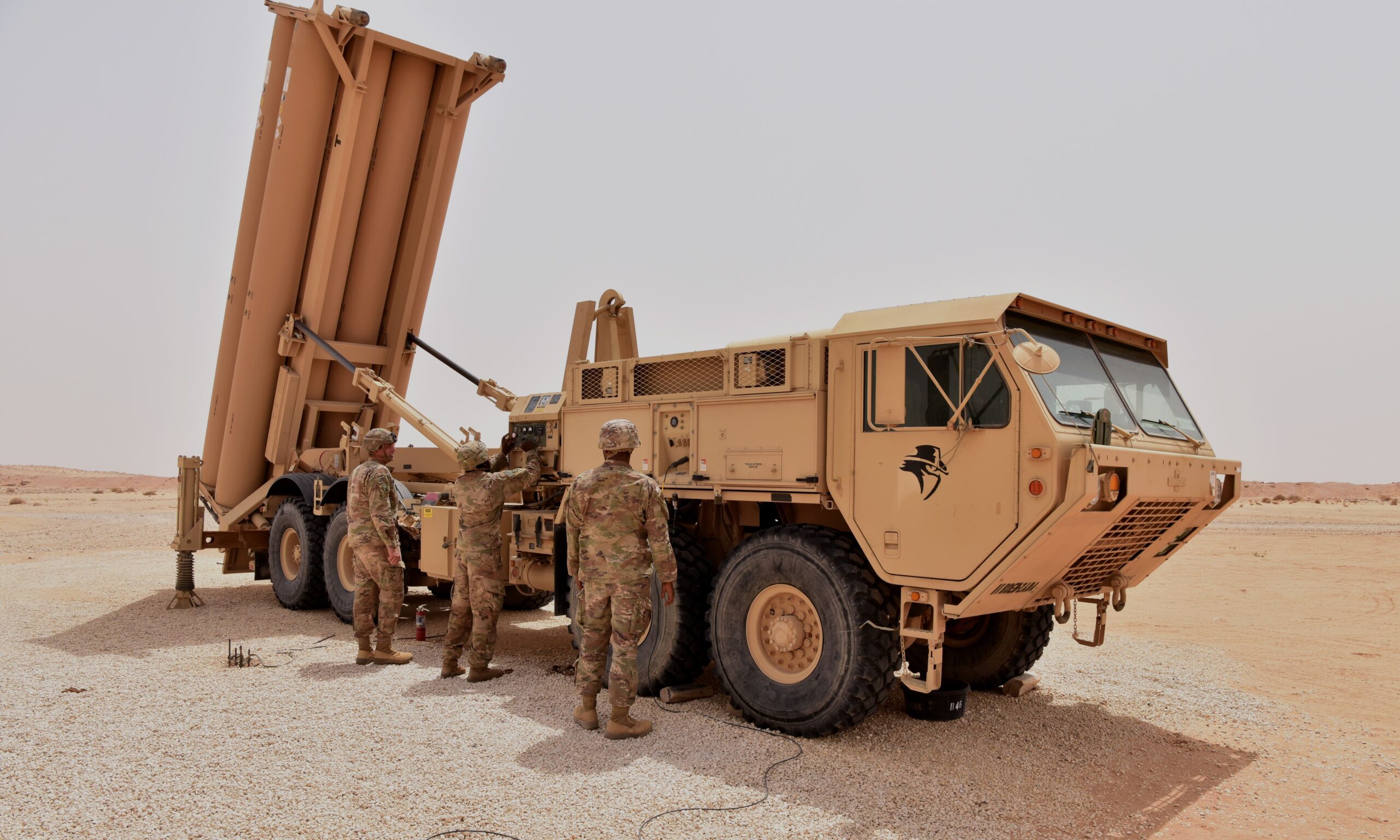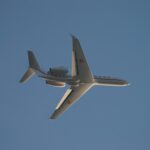The Paris Air Show gave America’s biggest defense suppliers a global stage to describe how they would fold familiar missiles, radars and command-and-control networks into President Donald Trump’s Golden Dome homeland-defense plan. They argued that starting with hardware already in service will cut cost and time, but even their upbeat briefings could not hide a basic truth: no one yet knows exactly who will run integration, how the money will flow, or whether a space-based interceptor layer can be fielded by 2028.
Industry officials began each pitch with the same message. Use what the Army, Navy and Space Force already own. Phil Jasper, president of Raytheon Air & Land Defense, said tested inventories such as NASAMS and THAAD form “the short path to an initial shield.”
Leveraging Fielded Systems for Early Golden Dome Capability
Tim Cahill, who heads Lockheed Martin Missiles and Fire Control, echoed him, noting that stockpiled THAAD launchers “could deploy tomorrow if Washington orders it.” This matched the atmosphere at Le Bourget, where industry makes its Golden Dome pitch despite ongoing program uncertainties.
Program leaders from Boeing and Leonardo DRS added more examples. They pointed to counter-UAS radars, over-the-horizon sensors and compact lasers already in low-rate production.
SHIELD Program Anchored in Operational Readiness
Their collective claim: knitting proven gear together will let Golden Dome stand up a first-generation architecture while more exotic layers mature.
The Missile Defense Agency appears to share that view, illustrated by its recent award of a $429M contract to i3 aimed at enhancing system data analysis and integration. A presolicitation for the Scalable Homeland Enterprise Layered Defense – SHIELD – lays out a ten-year, $151 billion multiple-award contract vehicle that explicitly calls for rapid integration of “fielded or near-fielded systems” alongside new technology.
Still, no one can say who will be prime integrator. Lockheed argues that its C2BMC command net and AEGIS franchise prove it can stitch sensors and shooters across every domain.
Raytheon counters that an “open architecture first” mindset matters more than corporate pedigree.
Boeing stresses experience with layered missile defense under the original Ground-based Midcourse Defense program.
Golden Dome Missile Defense Relies on Five Proven Weapon Platforms
Defense officials confirm only that the Space Force vice chief, Gen. Michael Guetlein, will lead the inter-agency team and that a draft request for proposals will follow the Paris show “within weeks.
According to industry sources, the competition’s early work share will revolve around upgrades to five mature weapons the Pentagon already buys:
- THAAD interceptors for exo-atmospheric shots
- PAC-3 MSE missiles for point defense
- NASAMS launchers for cruise-missile work
- AEGIS SM-3 Block IIA rounds for sea-based coverage
- L3Harris’ Space-Based Kill Assessment sensors for battle damage indication
Budget Uncertainty Clouds Golden Dome Funding Path
Using those assets shortens schedules, but it also means coping with different datalinks, engagement doctrines and suppliers. Lockheed’s Stephanie Hill said the answer lies in transparent interface control documents and a modular command layer “similar to what we are building for Australia’s AIR-6500.”
Money remains the second large unknown. The White House pegs total cost near $175 billion, but a Congressional Budget Office memo circulating on Capitol Hill lists a range of $161 billion to $542 billion, depending on how aggressively the constellation of interceptors and tracking satellites grows. Similar debates emerged during the Pentagon’s 2026 plan to balance naval expansion with missile defense investments.
To fund the opening phase, the administration wants a $25 billion down payment in its reconciliation megabill. That package stalled in June when moderate Republicans balked at unrelated domestic spending.
Lawmakers who back the shield responded by forming Golden Dome caucuses in both chambers. The House group, led by Rep. Zach Crank, promises monthly briefings to rally support; the Senate counterpart is chaired by Sen. Tim Sheehy.
The caucuses have already pressed the appropriations committees to protect the initial cash tranche if the larger bill collapses. This political effort parallels concerns about the U.S. Navy’s SM-6 missile line, which is at risk without reconciliation bill funding.
Political Timeline Driving Defense Procurement Urgency
Our analysis shows the political clock may matter more than the technical one. The President wants an operational – if limited – capability before the 2028 election.
Engineers at the show called that schedule “aggressive but not impossible,” provided three events occur in 2025:
- Architecture Definition. Finalize sensor shooter pairings so firms can cut interface code instead of debating standards.
- Contract Awards. Issue SHIELD task orders early enough to fund long-lead parts by January 2026.
- Orbit Selection. Decide on low-Earth versus medium-Earth constellations to lock propulsion and power margins.
Interceptor and Laser Tech Face Maturity Gap
Defense officials report that an unclassified “garden fence” version of the architecture will release before Thanksgiving, giving industry a common baseline.
Technology gaps still loom. Space-based interceptors remain PowerPoint rockets, but U.S. firms have already begun testing them: space-based interceptors being tested. The Space Force has asked for industry ideas on propulsion, sensor hardening and autonomous engagement logic, with white papers due July 29.
Laser weapons, another Golden Dome pillar, recently downed test drones at White Sands but have yet to prove against high-Mach ballistic targets.
Golden Dome Ripple Effects Stir NATO, Industry Dynamics
European observers at Le Bourget wondered what the U.S. plan means for trans-Atlantic air-and-missile defense. Some NATO officials privately noted that if Washington finances a national space shield, allies could redirect budgets toward regional point defense, potentially reshaping Europe’s own Sky Shield initiative.
Canada has asked to join Golden Dome, though negotiations over a proposed $61 billion buy-in fee have produced no agreement.
Uncertainty also hangs over commercial participation. A SpaceNews summary – the full article went behind a paywall late Monday – said the Missile Defense Agency will host a one-day forum this month to encourage non-traditional suppliers to bid SHIELD software modules and small-sat buses.
Dual-Use Space and Private Sector in Golden Dome Software Bids
That aligns with recent White House guidance instructing the Pentagon to “maximize dual-use space assets” to curb cost.
Meanwhile, Silicon Valley firms keep jockeying for position. Anduril and Palantir pitch AI pipelines to fuse radar, optical and infrared tracks in seconds.
SpaceX keeps silent after a reported contract review sparked by CEO Elon Musk’s dispute with the President, but insiders expect the company to bid launch services once requirements settle.
2026–2027 Pathfinder Tests Define Golden Dome Trajectory
Defense officials confirm that four pathfinder flight tests are slated between December 2026 and June 2027. The first will pair a THAAD-class booster with a mini-kill vehicle to prove homing accuracy above 150 kilometers. The second will shoot a PAC-3 MSE from a ship deck to check cross-domain command links. Two later shots will use prototype orbital interceptors released from a Sherpa-ES rideshare bus.
If those trials succeed, a limited defensive ring could stand guard over the continental United States by late 2028. Failure would trigger a schedule slip into the next administration. Either way, companies in Paris left with a clear message: integration first, then innovation. Without a stable backbone, the Golden Dome will remain a patchwork of promising parts.
REFERENCE SOURCES
- https://www.washingtontechnology.com/contracts/2025/05/mda-previews-151b-contract-trumps-golden-dome-missile-defense-system/405601/
- https://www.reuters.com/business/aerospace-defense/lockheed-boeing-tout-golden-dome-credentials-at-paris-air-show-2025-06-16/
- https://www.lockheedmartin.com/en-us/capabilities/missile-defense/golden-dome-missile-defense.html
- https://www.usnews.com/news/top-news/articles/2025-06-16/lockheed-boeing-tout-golden-dome-credentials-at-paris-air-show
- https://dsm.forecastinternational.com/2025/06/17/frontline-flight-paris-air-show-2025-day-2/
- https://breakingdefense.com/2025/07/in-paris-industry-makes-its-golden-dome-pitch-despite-uncertainty/
- https://spacenews.com/goldendome/
- https://www.defensenews.com/congress/2025/06/10/two-house-lawmakers-launch-golden-dome-caucus/
- https://www.csis.org/analysis/americas-golden-dome-explained
- https://www.ft.com/content/84168739-c343-416a-adb8-1e046dad6c95



Launching_ceremony_2025-07-02-1-150x150.jpg)